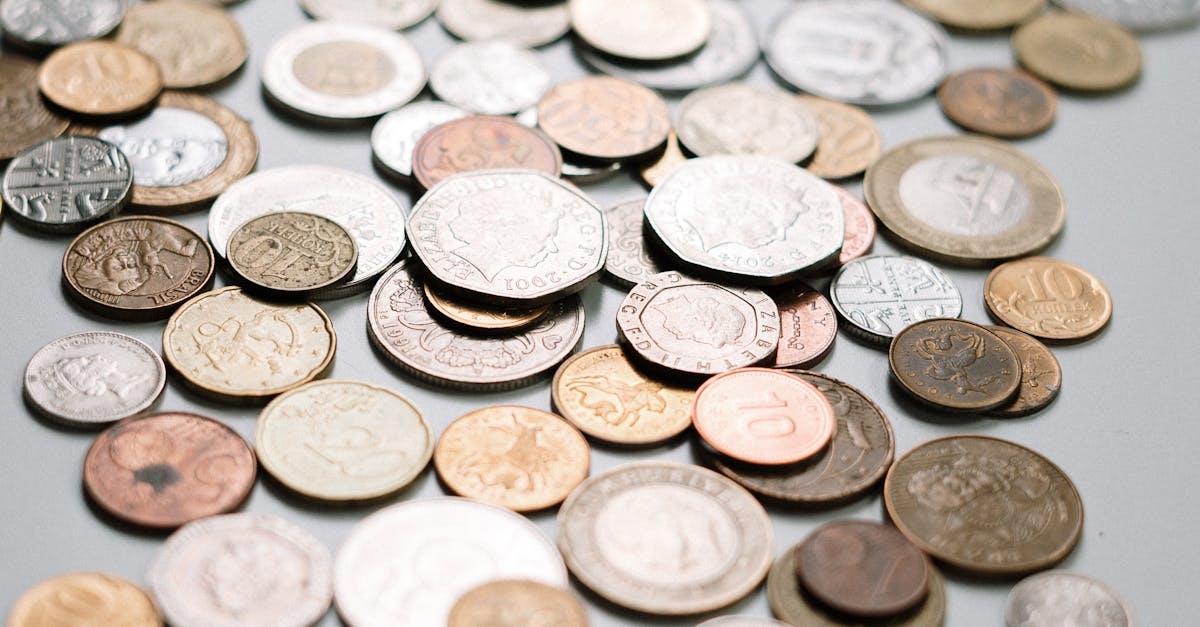The Gilded Influence of Central Banks on the Global Gold Market

Central Bank Purchases: Shaping the Future of Gold Demand and PricesIn the intricate tapestry of global finance, central banks play a pivotal role in shaping the direction of economies and safeguarding financial stability. Among their many responsibilities, central banks hold a significant portion of the world’s gold reserves, a practice with deep historical roots and profound implications for the gold market. In this article, we delve into the fascinating world of central bank gold purchases, exploring their impact on global demand and prices, and providing valuable insights for investors navigating the ever-changing gold market landscape.\ \ Central banks’ motivations for holding gold reserves are multifaceted, ranging from historical tradition to strategic diversification. Gold’s inherent value, scarcity, and ability to retain its worth during periods of economic turmoil make it an attractive asset for central banks seeking to stabilize their financial systems and protect against inflation. Recent years have witnessed a resurgence in central bank gold purchases, with major players like China, Russia, and Turkey leading the way. This trend is driven by a combination of geopolitical tensions, concerns over currency devaluation, and a desire to diversify away from traditional reserve currencies.\ \ The impact of central bank gold purchases on the global gold market is undeniable. Increased demand from central banks drives up prices, benefiting gold miners and investors alike. Gold’s safe-haven status and its role as a strategic asset for central banks also contribute to its allure during times of market volatility and economic uncertainty. Understanding the dynamics of central bank gold activities is crucial for investors seeking to make informed decisions in the gold market.
Key Insights into Central Bank Gold Purchases and Their Impact on the Market
Key Insights
- Central banks play a significant role in the global gold market through their purchases and sales of gold.
- Recent trends in central bank gold purchases have been driven by factors such as geopolitical tensions, concerns over currency devaluation, and a desire to diversify reserves away from traditional currencies.
- Central bank gold purchases can impact global gold demand and prices, with increased demand leading to price premiums that benefit gold miners and investors.
- Central banks view gold as a strategic asset for diversification and a safe haven during economic uncertainties, which can influence market sentiment and investment decisions.
- Investors can navigate the market dynamics influenced by central bank gold activities by diversifying their portfolios with gold, monitoring central bank activities, and considering their own investment goals and risk tolerance.
1. Understanding Central Bank Gold Reserves
Central banks, the guardians of financial stability, have long held a fascination with gold, a precious metal that has captivated civilizations for millennia. Gold’s unique properties, including its scarcity, durability, and intrinsic value, have made it a cornerstone of global monetary systems for centuries.
For central banks, gold serves as a strategic asset, providing stability and diversification to their financial reserves. Historically, gold has been viewed as a safe haven during times of economic turmoil, retaining its value even when other assets falter. This inherent stability makes gold an attractive investment for central banks seeking to protect their financial systems against inflation and currency fluctuations.
In addition to its role as a safe haven, gold also plays a significant role in central bank reserve management. Gold reserves provide central banks with liquidity, allowing them to meet their financial obligations and intervene in currency markets when necessary. Gold’s global acceptance and recognition make it a valuable asset for central banks seeking to bolster their international standing and credibility.
2. Recent Trends in Central Bank Gold Purchases

Recent Trends in Central Bank Gold Purchases
In recent years, central banks around the world have been actively accumulating gold reserves, a trend that has reshaped the global gold market. This surge in central bank gold buying is driven by a confluence of factors, including geopolitical tensions, concerns over currency devaluation, and a desire to diversify away from traditional reserve currencies.
Key players in this trend include China, Russia, and Turkey, which have been among the most aggressive buyers of gold in recent years. China, in particular, has emerged as a major force in the gold market, with its gold reserves now exceeding 2,000 tonnes. Other central banks, such as those of India, Kazakhstan, and Poland, have also been increasing their gold holdings at a steady pace.
The motivations behind central bank gold purchases are multifaceted. Some central banks view gold as a safe haven asset during times of market volatility and economic uncertainty. Others are seeking to diversify their reserves away from traditional currencies like the US dollar, which has been losing value due to inflation and geopolitical tensions. Additionally, some central banks are buying gold to support their domestic gold mining industries and boost their economies.
3. Impact on Global Gold Demand
Central bank gold purchases and sales have a significant impact on the overall demand for gold in the global market. When central banks buy gold, it reduces the supply available to other buyers, such as jewelers, investors, and industrial users. This can lead to an increase in gold prices, as buyers compete for the available supply.
The impact of central bank gold purchases on demand is particularly evident in countries like China and Russia, which have been major buyers of gold in recent years. As these central banks accumulate gold, they reduce the amount of gold available to other buyers in the market, driving up prices. This, in turn, can have a ripple effect on the global gold market, as higher prices encourage more people to invest in gold, further increasing demand.
Central bank gold sales, on the other hand, can have the opposite effect, increasing the supply of gold in the market and potentially leading to lower prices. However, central banks typically sell gold only in small quantities and under carefully controlled conditions, so the impact on the market is usually limited.
Increased Demand and Price Premiums
Increased Demand and Price Premiums
Central bank gold purchases can drive up demand for gold and lead to price premiums, benefiting gold miners and investors. When central banks buy gold, they reduce the supply available to other buyers, such as jewelers, investors, and industrial users. This can lead to an increase in gold prices, as buyers compete for the available supply.
Increased demand from central banks can also create a price premium for gold, meaning that the price of gold is higher than its spot price. This premium reflects the additional value that buyers are willing to pay to secure gold in a competitive market. Gold miners and investors can benefit from this price premium, as they can sell their gold at a higher price than they paid for it.
The impact of central bank gold purchases on demand and price premiums is particularly evident in countries like China and Russia, which have been major buyers of gold in recent years. As these central banks accumulate gold, they reduce the amount of gold available to other buyers in the market, driving up prices and creating a price premium. This has benefited gold miners and investors in these countries, as well as globally.
Strategic Diversification and Safe-Haven Status
Strategic Diversification and Safe-Haven Status
Central banks view gold as a strategic asset for diversification and a safe haven during economic uncertainties. Gold has a long history of retaining its value even during periods of financial turmoil, making it an attractive asset for central banks seeking to protect their financial reserves. Unlike fiat currencies, which can be subject to inflation and devaluation, gold’s value is relatively stable and不受政府或央行政策的影响.
By diversifying their reserves with gold, central banks can reduce their exposure to risk and improve the overall stability of their financial systems. Gold’s negative correlation with other asset classes, such as stocks and bonds, makes it a valuable addition to a diversified portfolio. This negative correlation means that when other asset classes are performing poorly, gold tends to perform well, and vice versa.
Central banks also view gold as a safe haven during times of economic uncertainty and geopolitical tensions. Gold is often seen as a store of value and a hedge against inflation, making it a popular asset during periods of financial stress. When investors lose confidence in other asset classes, such as stocks and bonds, they often turn to gold as a safe haven to protect their wealth.
4. Impact on Global Gold Prices

Impact on Global Gold Prices
Central bank gold purchases have a significant impact on global gold prices, both directly and indirectly. Direct impact occurs when central banks buy or sell gold in the market, affecting the supply and demand dynamics. When central banks buy gold, they reduce the supply available to other buyers, which can lead to an increase in gold prices. Conversely, when central banks sell gold, they increase the supply, which can lead to a decrease in gold prices.
Indirectly, central bank gold purchases can also influence gold prices by signaling their view of the market and the economy. When central banks buy gold, it can be seen as a sign of confidence in the metal and its value as a safe haven asset. This can lead to increased demand from other investors, further driving up prices. Conversely, when central banks sell gold, it can be seen as a sign of decreased confidence, which can lead to decreased demand and lower prices.
The impact of central bank gold purchases on gold prices is particularly evident in countries like China and Russia, which have been major buyers of gold in recent years. As these central banks accumulate gold, they reduce the amount of gold available to other buyers in the market, driving up prices and creating a price premium. This has benefited gold miners and investors in these countries, as well as globally.
5. Implications for Investors
Central bank gold activities can have a significant impact on the gold market, and investors need to be aware of these dynamics to make informed decisions. One way for investors to navigate the market is to diversify their portfolios with gold. Gold has a negative correlation with other asset classes, such as stocks and bonds, which means that it can help to reduce overall portfolio risk. Investors can add gold to their portfolios through a variety of methods, such as buying physical gold, investing in gold ETFs, or trading gold futures.
Another strategy for investors is to pay attention to central bank gold purchases and sales. When central banks buy gold, it can be a sign of confidence in the metal and its value as a safe haven asset. This can lead to increased demand from other investors, further driving up prices. Conversely, when central banks sell gold, it can be a sign of decreased confidence, which can lead to decreased demand and lower prices. By monitoring central bank gold activities, investors can make more informed decisions about when to buy or sell gold.
Finally, investors should consider their own investment goals and risk tolerance when making decisions about investing in gold. Gold can be a volatile asset, and investors should only invest what they can afford to lose. Gold should be viewed as a long-term investment, and investors should not panic sell during periods of market volatility.
6. Conclusion: The Role of Central Banks in the Gold Market
Conclusion: The Role of Central Banks in the Gold Market
Central banks play a significant role in the global gold market, and their gold purchases have a major impact on supply and demand dynamics, as well as gold prices. In recent years, central banks have been net buyers of gold, driven by factors such as geopolitical tensions, concerns over currency devaluation, and a desire to diversify their reserves away from traditional currencies.
This trend is expected to continue in the coming years, as central banks continue to view gold as a safe haven asset and a valuable addition to their reserves. Gold’s unique properties, including its scarcity, durability, and intrinsic value, make it an attractive asset for central banks seeking to protect their financial systems against inflation and currency fluctuations.
For investors, it is important to understand the impact of central bank gold activities on the gold market. By diversifying their portfolios with gold, paying attention to central bank gold purchases and sales, and considering their own investment goals and risk tolerance, investors can make more informed decisions about investing in gold.
Why do central banks buy gold?
Central banks buy gold for a variety of reasons, including: * To diversify their reserves and reduce their exposure to risk. * To protect their financial systems against inflation and currency fluctuations. * To serve as a safe haven asset during times of economic uncertainty and geopolitical tensions. * To support their domestic gold mining industries and boost their economies.
How do central bank gold purchases affect the gold market?
Central bank gold purchases can have a significant impact on the gold market, both directly and indirectly. * Directly, central bank gold purchases reduce the supply of gold available to other buyers, which can lead to an increase in gold prices. Conversely, central bank gold sales increase the supply of gold, which can lead to a decrease in gold prices. * Indirectly, central bank gold purchases can influence gold prices by signaling their view of the market and the economy. When central banks buy gold, it can be seen as a sign of confidence in the metal and its value as a safe haven asset. This can lead to increased demand from other investors, further driving up prices. Conversely, when central banks sell gold, it can be seen as a sign of decreased confidence, which can lead to decreased demand and lower prices.
What are the implications of central bank gold purchases for investors?
Investors need to be aware of the impact of central bank gold activities on the gold market in order to make informed decisions. * Investors can diversify their portfolios with gold to reduce overall risk. * Investors can pay attention to central bank gold purchases and sales to gauge market sentiment and make informed decisions about when to buy or sell gold. * Investors should consider their own investment goals and risk tolerance when making decisions about investing in gold.
Key Insights into Central Bank Gold Purchases and Their Impact on the Market
Key Insights
| Insight | Description | |—|—| | Central banks play a significant role in the global gold market. | Central banks hold a significant portion of the world’s gold reserves, and their purchases and sales of gold can have a major impact on supply and demand dynamics, as well as gold prices. | | Recent trends in central bank gold purchases have been driven by factors such as geopolitical tensions, concerns over currency devaluation, and a desire to diversify reserves away from traditional currencies. | In recent years, central banks have been net buyers of gold, driven by a variety of factors, including geopolitical tensions, concerns over currency devaluation, and a desire to diversify their reserves away from traditional currencies. | | Central bank gold purchases can impact global gold demand and prices, with increased demand leading to price premiums that benefit gold miners and investors. | When central banks buy gold, it reduces the supply of gold available to other buyers, which can lead to an increase in gold prices. This can benefit gold miners and investors, who can sell their gold at a higher price than they paid for it. | | Central banks view gold as a strategic asset for diversification and a safe haven during economic uncertainties, which can influence market sentiment and investment decisions. | Central banks view gold as a safe haven asset and a valuable addition to their reserves. This can influence market sentiment and investment decisions, as investors may follow the lead of central banks and buy gold during times of economic uncertainty. | | Investors can navigate the market dynamics influenced by central bank gold activities by diversifying their portfolios with gold, monitoring central bank activities, and considering their own investment goals and risk tolerance. | Investors need to be aware of the impact of central bank gold activities on the gold market in order to make informed decisions. Investors can diversify their portfolios with gold, pay attention to central bank gold purchases and sales, and consider their own investment goals and risk tolerance when making decisions about investing in gold. |

0 responses to “Central Bank Purchases: The Ripple Effect on Global Demand and Prices”